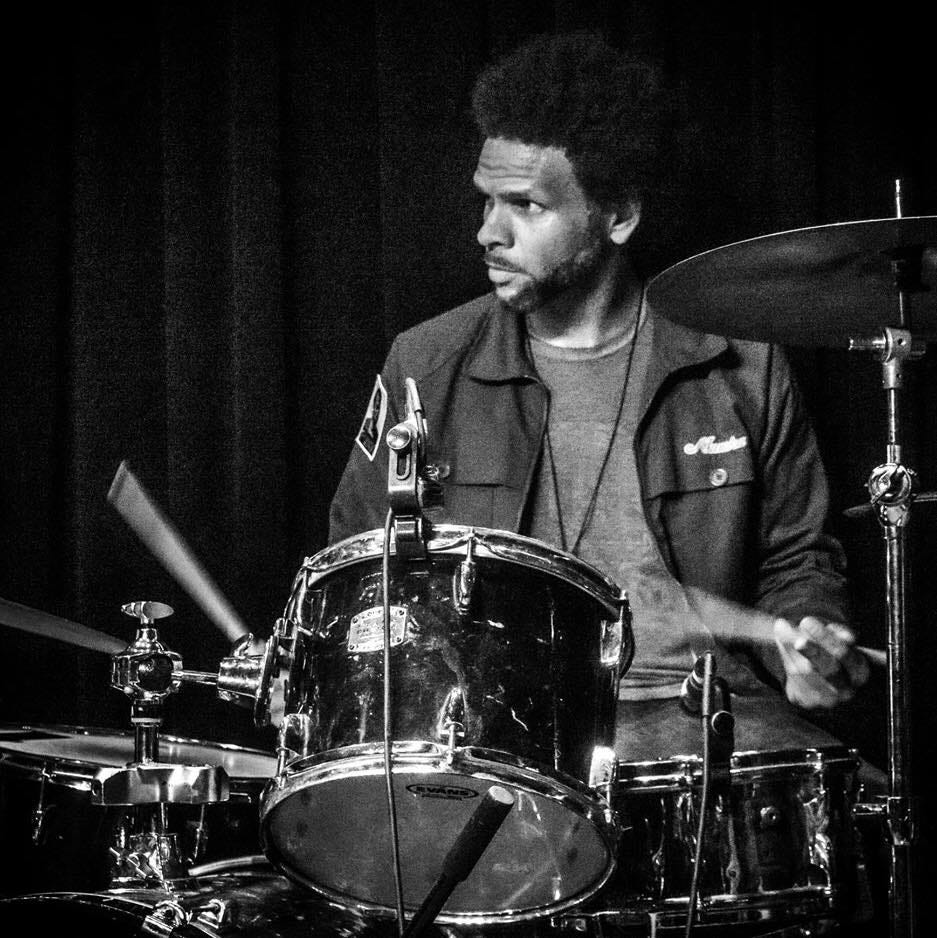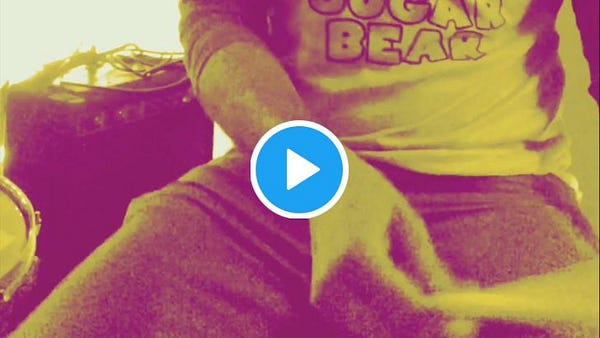"I Would Spend Four Days Trying to Get the Perfect Drum Sound": A J-Zone Discussion
The veteran recording artist opens up about re-inventing himself as a drummer, building a new studio setup, and his frequently sampled drum break records.

Queens-based renaissance man J-Zone was at a unique crossroads a decade ago. Burned out on a decade-plus of rapping and producing and in need of a new artistic direction, he picked up a pair of drumsticks and started tapping along to YouTube videos of Buddy Rich, Max Roach, Clyde Stubblefield, and other celebrated drummers. Despite his interest in percussion, he first decided to focus on teaching and an emerging career as a writer. His commitment paid off when his self-published memoir Root for the Villain: Rap, Bull$hit, and a Celebration of Failure was released to rave reviews from his musical peers on October 3rd, 2011.
Though the publication of his book was no doubt an important career milestone, a true watershed moment was just around the corner. On October 5th his late grandmother, roomate, and personal hero Edith “Evil E” Mumford told him he had a surprise waiting for him downstairs when he got home from his teaching gig. It was an inexpensive drum kit his father had purchased him. “I was 34 years old, but I felt like I was like six when you get a drum set at Christmas from your parents,” he says. “I'm a grown ass man. And my father's buying me a drum set.”
Despite feeling a little odd accepting the gift from his dad at first, it was the perfect start of a new chapter as a recording artist. J eased in to his new practice routine in the beginning, first playing along with different drum-heavy records from his collection. By Thanksgiving of 2011 he was reading a book about stick control and by March 2012 he decided to full dedicate himself to his new craft.
With large portions of his day spent at home caring for his ailing grandmother and his evenings filled with a variety of odd jobs, he decided to use the time when a home health aid was present to master his drum kit. “I took some lessons and then I would just sit down there and play every day for like four or five, six hours,” he says. “All through most of 2012 into 2013, I was doing that every single day. And then when I wasn't playing, I was doing research about how to record drums.”
As J’s practice and study habits become increasingly laser-focused, he faced a bit of a dilemma. He had unloaded much of his studio gear prior to self-publishing his memoir and his studio setup needed some work. But it wasn’t as simple as re-purchasing all of his previously owned gear—getting drums to sound just right is a different process than building a sample-based home studio setup.
To get him started RJD2 provided some helpful information about specific mics best used for self-recorded drums. J also put carpeting on the floor to absorb sound and bought an old, cost-effective Tascam mixer from the 1980s. When he decided to upgrade the kit his father had gifted him and invest in vintage drums, he had to shed another part of his producer past. “I'm odd jobbing and caregiving and playing drums, so money's not growing on trees,” J says of his financial state at the time. “So what I wound up doing is I sold about 70% of my record collection. All the records I used to buy for like samples, rare hip-hop records, and CDs.”
When all was said and done he had a few thousand dollars at his disposal.


As J’s studio setup and skills progressed, he noticed that his drums started to sound more and more like breakbeats he himself would actually want to sample as a producer. His chops, however, weren’t quite strong enough for him to audition with an established band or put out a self-released drum record.
Just as he has throughout much of his career, J found a creative workaround. He decided to merge the stories from his book, unreleased beats, and his newfound drumming talent into a 2013 rap release. As the project came together, he found himself prioritizing drum hits over all else. “What happened was on Peter Pan Syndrome, I made the album in four months,” he says. “I would spend an hour on a rhyme. I would spend an hour just digging up old beats I never used. And then I would spend four days trying to get the perfect drum sound and the perfect drum performance.”
Despite the meticulous attention to detail he showed on percussion, J remains mostly unsentimental about the project. He saw the record as a necessary release that put him back on listener’s radars, generated some income, and helped him further his drum chops. “I hate to say it, but the Peter Pan Syndrome was a vehicle for my drums,” he says.
Thought it wasn’t a drum record per se, other producers took note of the next level percussion. Artists called asking J to replay samples and build them custom breaks, Jordan Thorn of Bullyfinger reached out about a potential drum break record, and producers revealed that they had sampled an “open” drum section on Peter Pan Syndrome. When all was said and done, The Drum Broker released his debut drum break record Lunch Breaks in 2014.
After its release J Nota of Redef Records pressed the record up on vinyl and it spread through the producer community at a rapid clip. “Danger Mouse wound up sampling it,” he says. “Alchemist, Evidence, Jake One—people are hitting me up like, ‘Yo, I'm using your drums.’ And I'm like, ‘This is an atypical way to come in as a drummer.’ But you know, when has my journey been typical?”
J believes his production background and willingness to leave in little imperfections are two key factors in the success of Lunch Breaks. “I'm coming from the production side, like, ‘Nah, hit the snare real fucked up on the second bar and make the loop sound raggedy and disgusting,’” he says. “Let them think you're a bad drummer. Shit sounds better.”
The well-received debut was far from a one hit wonder. In the years since the initial success of Lunch Breaks J dropped Backyard Breaks on 7” vinyl in 2015, Guerilla Drums in 2018, and his most recent drum effort Break Bonanza in 2019. And each step of the way he continues to study and refine his process.
While his overall skills took a leap forward on Backyard Breaks, the 7” vinyl sound quality wasn’t quite up to his preferred standard. So he decided to switch it up on the next release. “When I did Guerilla Drums, I did double vinyl,” he says. “Instead of putting eight or nine on each side, I'm putting five on each side. And then when I did Break Bonanza I did single vinyl again, but I told the pressing plant to eliminate the spacers in between. So it looks like one song.”
Beyond nailing the desired sound, J also paid attention to producer and customer feedback. After playing a lot of uptempo, Afro-Cuban style drum patterns on Guerilla Breaks, he opted to slow things down and simplify them on Break Bonanza.
He also noted the popularity of Roc Marciano-style drumless beats and made sure to play patterns that could work as accents instead of the focal point of the beat. “In order to do that, you gotta learn how to play dynamically,” he says. “You gotta do drums that don't sound like standard breaks. They just sound like something really subtle that you would put behind a sample to push it along.”
In 2010 it looked like J’s career in music had run its course. Thankfully, a drum kit found its way into his life and forced him to reinvent himself. Now, after a successful series of break records, he has also established himself as a surefire studio drummer for folks like Lord Finesse and Pharoahe Monch, an accomplished live performer, and one half of the prolific funk duo The Du-Rites with Pablo Martin.
J-Zone’s journey from hip-hop producer to drum record creator, session player, and live drummer has been anything but typical, but it seems to have worked out well for him. Though the process of reinvention wasn’t easy, it gave him an impressive second act that still seems to be in its early stages.
If you enjoyed this article, please subscribe to the Micro-Chop newsletter to support independent music journalism.

